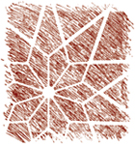Update on last week’s poetry group: it went well, although not exactly as I had expected. I started the group off with a warm-up exercise called a locogram. This activity is like a multiple-choice question, but you have to physically move to a spot in the room that represents your answer. I started off with four words taken from Mary Oliver’s poem “The Journey.” These words were house, mend, stones, and voice. I placed the words on the floor in a large circle and asked the participants to move to whatever word they felt most drawn to and then explain why. Then I repeated the exercise with whole stanzas from “The Journey”.
What I love about this exercise is that you almost always have someone standing at every option. It’s interesting to hear why people chose what they chose. It’s never the same as anyone else’s reason, which just goes to show the value in everyone’s story. I also wanted to do it as a warm-up, because it’s a really easy way to introduce movement in the beginning. You might think that this exercise would have the same effect if you just did it on paper. The physical act of moving around the room, however, shows your choice and seems to activate something in people, perhaps some heightened awareness of their body’s intuition. I think it’s also cool to visualize the spectrum of where people are in relation to the question, which forces people to confront their relationship to conformity vs. independence. Lots of material to work with!
After the warm-up, we read the poem a couple more times, and then I invited everyone to free-write a response poem. Everyone had such beautiful things to say; and again, not one of them was a repeat of anyone else’s contribution. We had responses that touched on themes of survival, healing, relationships, and internal struggle. It was unifying to see everyone resonate so deeply and uniquely.
What did not go as expected was the closing exercise. I was going to have everyone stand up again and do what I call the chorus-sculpt activity. Everyone chooses a line or a phrase (in this case, a line from their response poem) and adds it to a group sculpture by striking a pose with their body as they recite the line. Once the sculpture is complete, the conductor (that is, I) then points to people successively to have them repeat their line, as if they were instruments in an orchestra. The end result is that a new group poem is performed. Since I was running short on time, I didn’t have everyone stand up and create a sculpture for this exercise. I did quickly conduct an impromptu group poem by gesturing at people around the table to call on them to repeat their lines. Since this less-embodied version of the exercise worked, I plan to employ it as a stepping stone to a more-embodied version with a future group.
Once again I’m amazed at the talents of this community and can’t wait to explore them in this group even further!
– Mary Schwabenland

